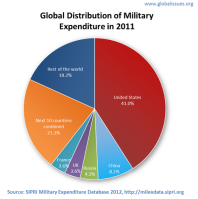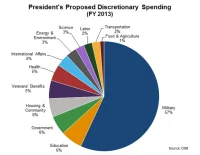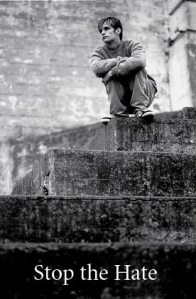![]() A scientific study entitled, “Multiple aspects of sexual orientation: Prevalence and sociodemographic correlates in a New Zealand national survey” recently appeared in the Archives of Sexual Behavior. The abstract was published online on 22 June 2010:
A scientific study entitled, “Multiple aspects of sexual orientation: Prevalence and sociodemographic correlates in a New Zealand national survey” recently appeared in the Archives of Sexual Behavior. The abstract was published online on 22 June 2010:
Sexual orientation consists of multiple components. This study investigated both sexual identity and same-sex sexual behavior. Data came from the New Zealand Mental Health Survey, a nationally representative community sample of New Zealanders aged 16 years or older, interviewed face-to-face (N = 12,992, 48% male). The response rate was 73.3%. Self-reported sexual identity was 98.0% heterosexual, 0.6% bisexual, 0.8% homosexual, 0.3% “Something else,” and 0.1% “Not sure.” Same-sex sexual behavior with a partner was more common: 3.2% reported same-sex sexual experience only and 1.9% reported both experience and a relationship. For analysis of childhood and lifecourse, five sexuality groups were investigated: homosexual, bisexual, and heterosexual divided into those with no same-sex sexual experience, experience only, and experience and relationship. The non-exclusively heterosexual groups were more likely to have experienced adverse events in childhood. Educational achievement and current equivalized household income did not differ systematically across the sexuality groups. Only 9.4% of the exclusively heterosexual lived alone, compared with 16.7% of bisexuals and 19.0% of homosexuals. Heterosexuals were more likely than bisexuals or homosexuals to have ever married or had biological children, with differences more marked for males than for females. Heterosexuals with no same-sex sexual experience were more likely to be currently married than the other two heterosexual groups. Restricting comparisons to heterosexual, bisexual, and homosexual identification ignores the diversity within heterosexuals. Differences between the bisexual and homosexual groups were small compared with the differences between these groups and the exclusively heterosexual group, except for sex (80.8% of bisexuals were female).
Of people who reported certain traumatic childhood events, including sexual assault, rape, violence to the child, and witnessing violence in the home, 15 percent were not heterosexual; of those without such experiences, only 5 percent were not heterosexual, suggesting that such experiences tripled the chance of later homosexual or bisexual identification. Although sexual or physical abuse in childhood was associated with adult homosexuality, other traumatic experiences, such as the sudden death of a loved one or serious childhood illness or accident, were only slightly associated with non-heterosexual identity or behavior.
The authors are J. Elisabeth Wells and Magnus A. McGee, who are both in the Department of Public Health and General Practice, University of Otago, New Zealand and Annette L. Beautrais, who is affiliated with both the Department of Psychological Medicine, University of Otago and the Department of Emergency Medicine, Yale University School of Medicine. The journal is peer-reviewed, so these authors are not hacks.
However, I find some aspects of the report disturbing because of their potential to mislead non-scientists (and even some scientists).
- Wells, in commenting publicly about the study, revealed her assumption that homosexuals are made, not born. This is a major glaring flaw, since existing research has not produced conclusive findings indicating grounds for such an assumption. “People who either identify themselves as homosexual or bisexual, or have had a same-sex encounter or relationship, tend to come from more disturbed backgrounds,” she remarked. “You could say that if someone was sexually abused as a child, chooses to live as a homosexual and lives life well, then that is not a bad thing. But if they are living a homosexual life and regretting it, that is another matter.”
- More importantly, I seriously doubt the credibility of this study because all of the ratios are way off. Of the sample who provided responses, ninety-eight percent identified as heterosexual, only 0.8 percent homosexual, and only 0.6 percent bisexual. Of those who identified as bisexual, 80 percent were women. This study is seriously skewed. The responses were all obtained in face-to-face interviews, which in sex studies are known to lead to under-reporting by sexual minorities. Self-reporting, even when obtained by questionnaire, is unreliable in sex studies. For example, homosexuals are probably less likely to identify as such because of homophobia in society. And are self-avowed homosexuals more — or less — likely to reveal that they were victims of child sex abuse than heterosexuals? They may be more comfortable talking about their sex lives and therefore more inclined to report childhood abuse. On the other hand, heterosexual males, less comfortable with discussing sex or seeing themselves as victims, may be far less likely to admit that they were sexually abused as children.
- It is always important in scientific studies to distinguish between correlation and causation. This study reveals only a correlation between childhood abuse and later homosexual identification. It does not and, in fact, cannot demonstrate a causal connection — that child abuse causes homosexuality. To conclude so would be as illogical as saying that lynchings cause brown skin, or wearing skirts causes breast cancer. Perhaps homosexual identification causes child abuse — in other words, maybe homosexual children are more likely to be victims because of bigotry against them? Independent evidence — namely, the most comprehensive report ever on the experiences of lesbian, gay, bisexual and transgender (LGBT) students in the United States, The 2007 National School Climate Survey — indicates that this is likely. The survey of 6,209 middle and high school students conducted by the Gay, Lesbian, and Straight Education Network (GLSEN) found that nearly 9 out of 10 LGBT students (86.2 percent) experienced harassment at school in the past year, three-fifths (60.8 percent) felt unsafe at school because of their sexual orientation, and about a third (32.7 percent) skipped a day of school in the past month because of feeling unsafe. This survey, of course, did not address abuse in the home arising out of homosexual identification.
Tony Simpson, chairman of the national LGBT group Rainbow Wellington in New Zealand, said that the research should not be taken to mean that homosexuals are not born that way. “I have no doubt that the religious right will leap to the conclusion that this goes to show conclusively that homosexuals are made rather than born,” he said. As he predicted, the study was reported on LifeSiteNews.com, an antigay religious-right Web site.
However, the scientific and medical consensus is clear: homosexual orientation is not the result of choice. There is probably a combination of genetic and biological factors that cause people to become gay. Choice and willfulness have nothing to do with who is and is not homosexual (or heterosexual). Someone who falls in love with a member of their own sex has no more choice over their sexual orientation than someone who falls in love with a member of the opposite-sex. The only choice is whether to embrace and celebrate one’s orientation, or to be ashamed and hide.
Suggested Reading:
- Wells, J., McGee, M., & Beautrais, A. (2011). “Multiple Aspects of Sexual Orientation: Prevalence and Sociodemographic Correlates in a New Zealand National Survey” Archives of Sexual Behavior Volume 40, Number 1: 155-168. DOI: 10.1007/s10508-010-9636-x

























You must be logged in to post a comment.